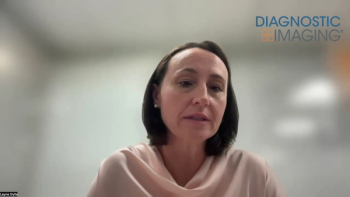
Ultra-Fast CT Scan Accurately Assesses Coronary Blockages
Computed tomography imaging performed with an ultra-fast 320-detector scanner accurately assesses the need for cardiac angioplasty.
Computed tomography imaging performed with an ultra-fast 320-detector scanner accurately assesses the need for cardiac angioplasty, show results of a study presented today at the European Society of Cardiology Congress in Munich, Germany.
Researchers assessed the accuracy of testing used to determine the need for angioplasty among people who are having chest pain but not a heart attack. A total of 381 patients completed the study. They underwent traditional SPECT tests, invasive angiography, and two types of 320-detector CT exams: CTA, in which the scanner was used to visualize the vessel anatomy, and CTP, in which patients were tested with the same machine, but after they had been given a vasodilator.
The 320-detector CT scanner not only showed the anatomy of the blockages, but also whether the blockages were causing a lack of perfusion to the heart.
“We were therefore able to correctly identify the patients who needed revascularization within 30 days of their evaluation,” Carlos E. Rochitte, MD, a cardiologist at the Instituto do Coracao in Sao Paulo, Brazil, and lead author of the study said in a release.
“We found an excellent correlation in results when we compared the 320-detector CT testing with the traditional means of assessment using stress test with imaging and cardiac catheterization,” added Joao A. C. Lima, MD, a professor of medicine and radiology at the Johns Hopkins University School of Medicine and senior author.
The patients will be followed for up to five more years so researchers can track any heart-related events, hospital admissions, procedures and surgeries.
Newsletter
Stay at the forefront of radiology with the Diagnostic Imaging newsletter, delivering the latest news, clinical insights, and imaging advancements for today’s radiologists.



























